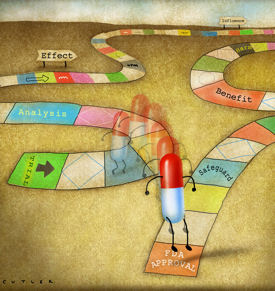A physician who e-mails patients—and likes it
A physician relates how online communication with patients has streamlined his health care delivery and even provided a trickle of revenue.
SAN DIEGO—Most small practice physicians—9 out of 10, according to a 2008 government survey—have yet to incorporate electronic health records (EHR) into their practices. But Kenneth Adler, MD, a family physician in Tucson, Ariz., has already moved his three-doctor practice on to the next step in the computerization of medicine: patient portals.
A patient portal works with the practice's EHR to allow patients, office staff and physicians to communicate electronically, Dr. Adler told attendees at the Medical Group Management Association's annual meeting held here in October.
“In 2004, we got an EHR. Ever since we did that I was interested in this notion of getting the patients connected electronically and involving them more in their health care,” he said.
Dr. Adler uncovered benefits as well as problems in his experimentation with the patient portal, which had been up and running for 16 months at the time of his lecture.
One of the primary benefits of the portal is efficiency. Using the portal, patients can request appointments, refills, referrals or ask questions of their physician. “The types of things people use it for are the same things they would ask for on the phone,” said Dr. Adler.
But electronic communication cuts out many of the steps and delays (and potential for miscommunication) included in the traditional patient-physician phone contact. “If I got a phone message from my medical assistant or receptionist, if I wasn't going to call the patient myself, I would respond in our EHR and they would call the patient and read or interpret what I said,” Dr. Adler explained.
Now the practice Web site routes the patient's question directly to the physician (as a task in the EHR system) and he or she crafts a response directly back to the patient. Contrary to common fears, the process doesn't really create more work for providers, according to Dr. Adler.
“The only difference in the workload from a provider perspective is I probably have to explain things a little more clearly, a little more basically than I would to the medical assistant.”
The flood of e-mailed questions that is thought by many docs to be a peril of online patient communication also never materialized in Dr. Adler's practice. “Hypochondriacs do use it a little bit more, but that's not really been a big problem,” he said.
The biggest users of the portal are people with chronic diseases and, surprisingly, older patients. “There's a prejudice that older folks don't use the internet, but that's not my experience,” said Dr. Adler. Young, healthy patients had less need to contact a physician and therefore less interest in the online service, he found.
Lack of patient interest, in fact, was the biggest problem that Dr. Adler's project encountered. He had conducted a survey in 2006 to assess his patients' desire for online communication. Of his 2,380 active patients, 75% had Internet access and 47% said they would be willing to pay at least $10 per year to communicate online with their physician.
“That sounded good,” said Dr. Adler. But in the first 12 months of the program, only 349 patients signed up and of those, only 35% re-enrolled when their first year was up.
Cost may be one deterrent. The practice charges patients $15 per year for access to the online communication. “Most practices that offer online portals do not charge fees, but I wanted to test it out and see if there was an opportunity there,” Dr. Adler said. Some patients saw the system as a great value, while others protested that the charge was a “rip-off,” he said. Many of the patients who declined to re-enroll after a year said that they had never ended up using the service.
The online system's e-visit feature, by which patients could submit a longer clinical query, attracted notably little interest. That may have been because patients found they could ask their questions through the free communication tool instead of paying an additional $30 for an official e-visit, Dr. Adler said.
Even without the expected quantity of traffic, the online communication project made money, netting about $4,000 for the year. The only costs were for setup and operation of the software and a little bit of training time, Dr. Adler said.
He checked with the practice's malpractice carrier before getting started, and their only concern was that patients be clearly informed that the system is not for emergencies. The Web site requires patients to acknowledge that a response will be provided in 72 hours, although it's usually done within 24, Dr. Adler said. “We gave ourselves a lot of leeway because we did not want people to think this was for urgent services.”
Understanding the purpose of the system is not a problem for the patients who choose to use it, according to Dr. Adler. “The small percentage of patients who are using it are almost fanatical about it. They really love it,” he said.
The system also turned out to have benefits for the physicians beyond the predicted financial and efficiency gains. “This was an unexpected bonus. You'd think electronic communication is somehow impersonal but when you start exchanging e-mails, a personal nature seeps into that, and I think the patients and I feel a little bit closer,” said Dr. Adler.




